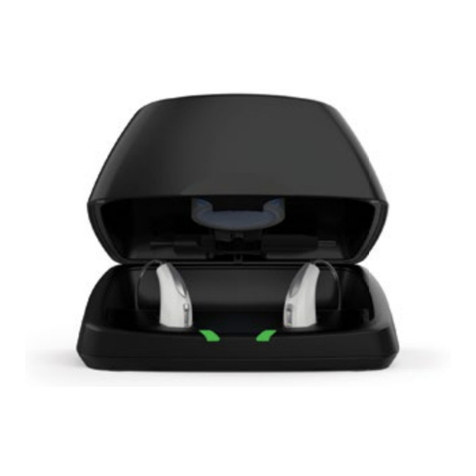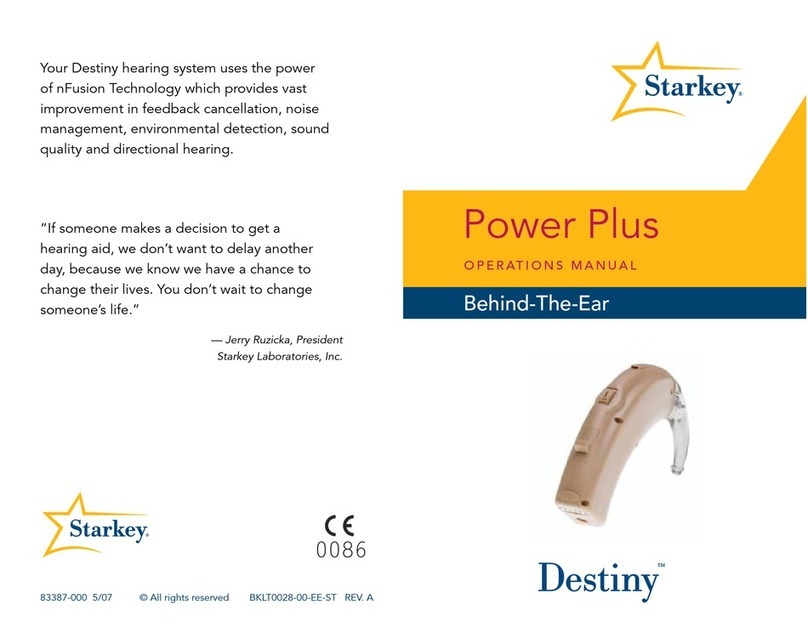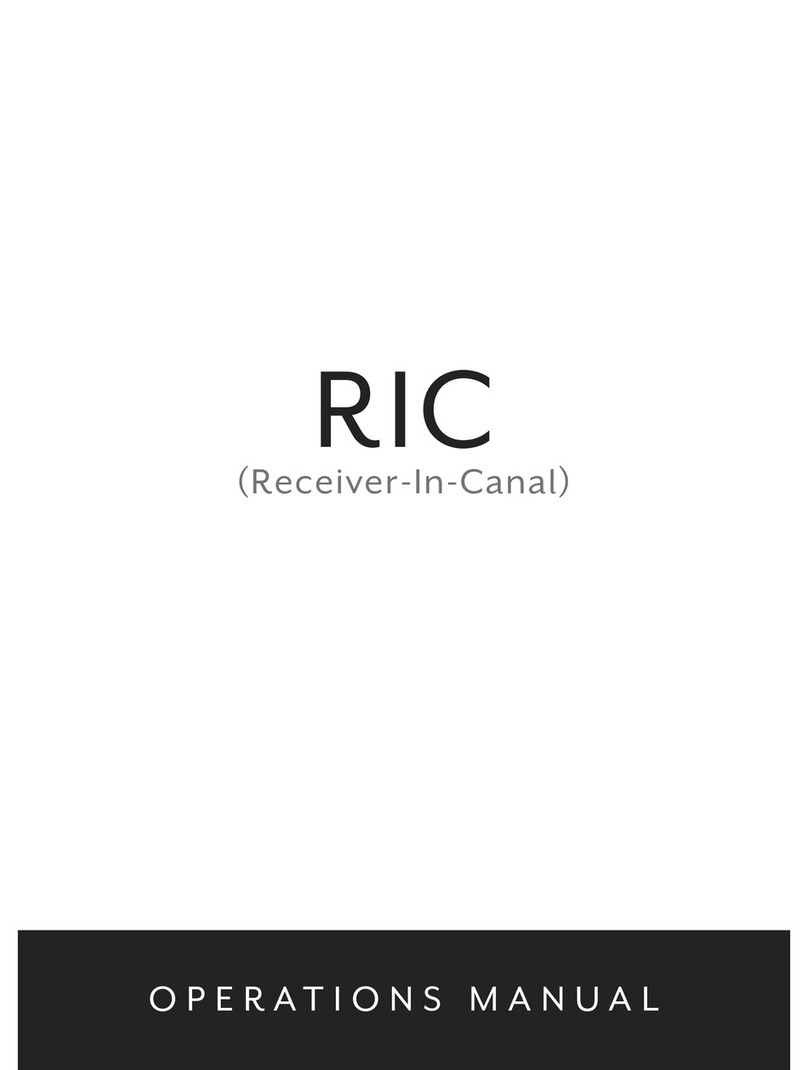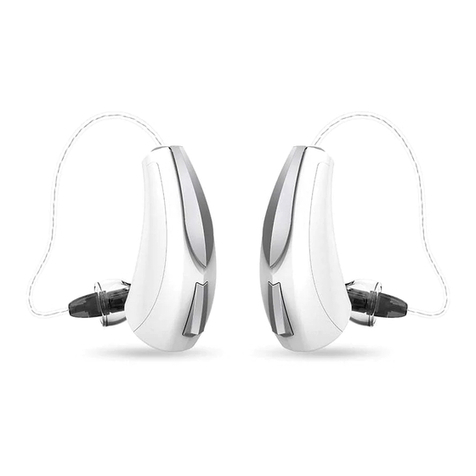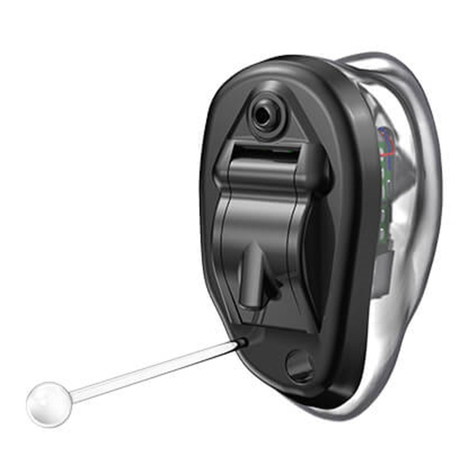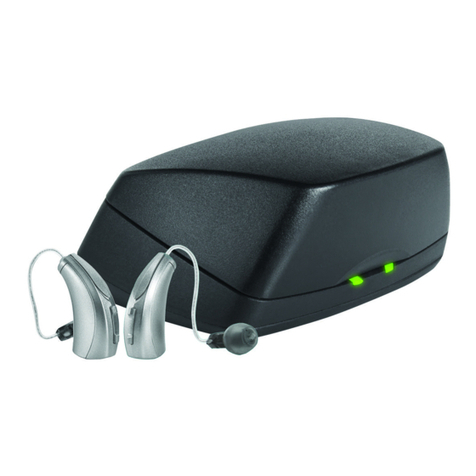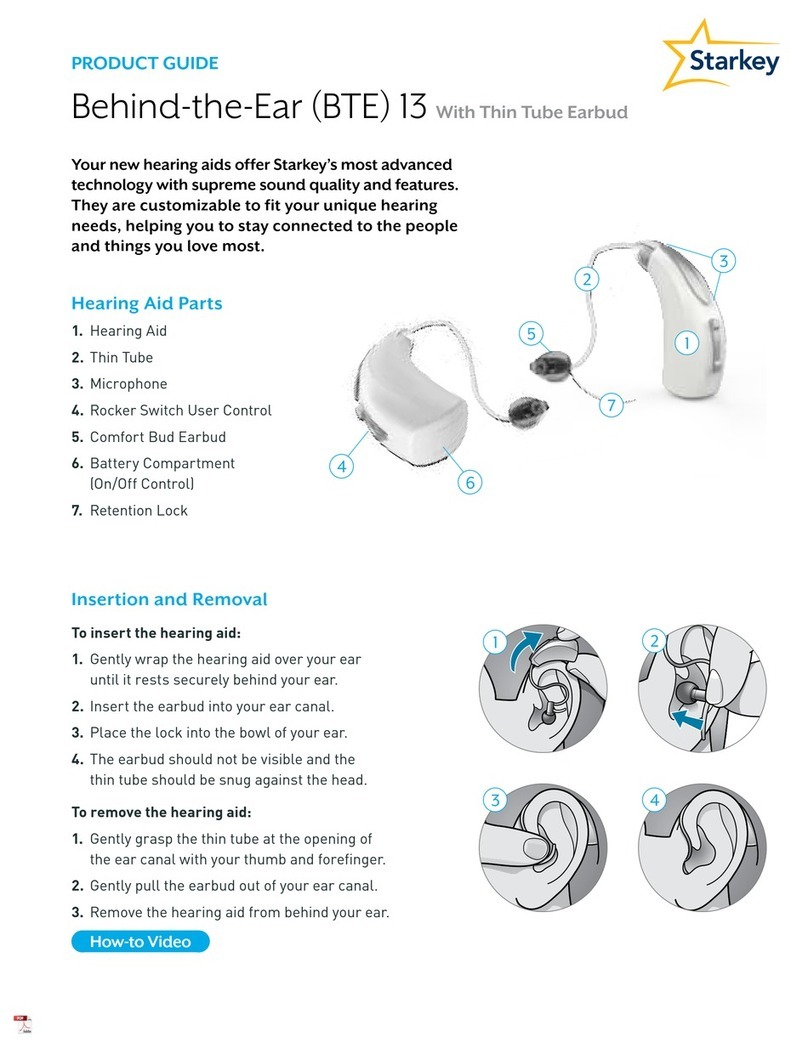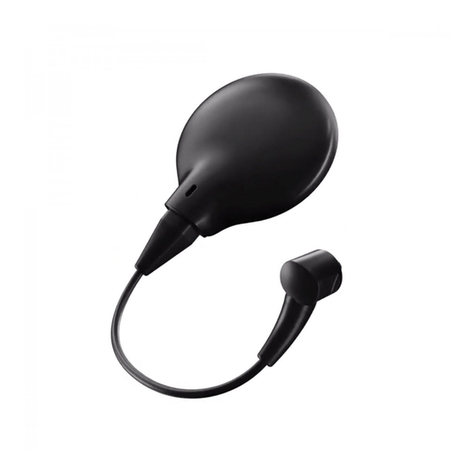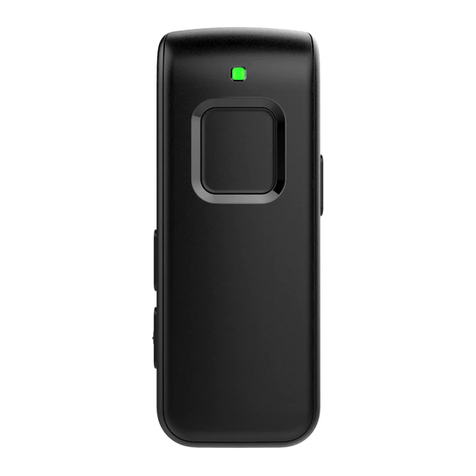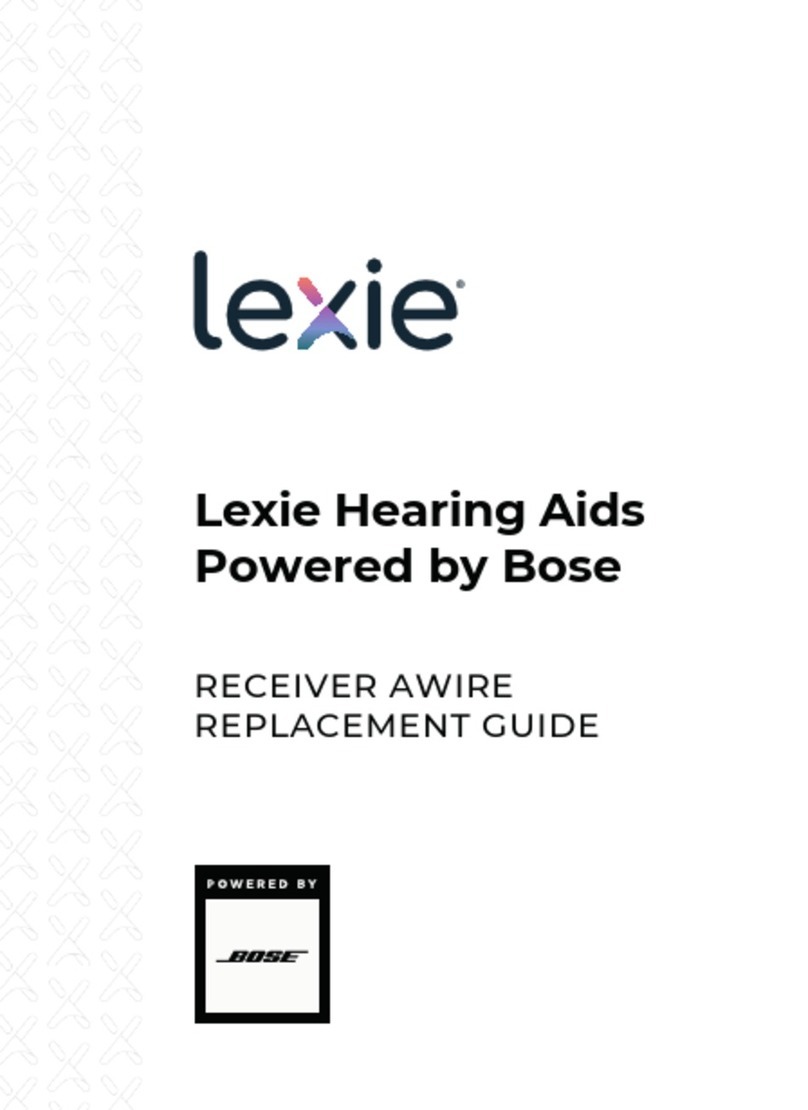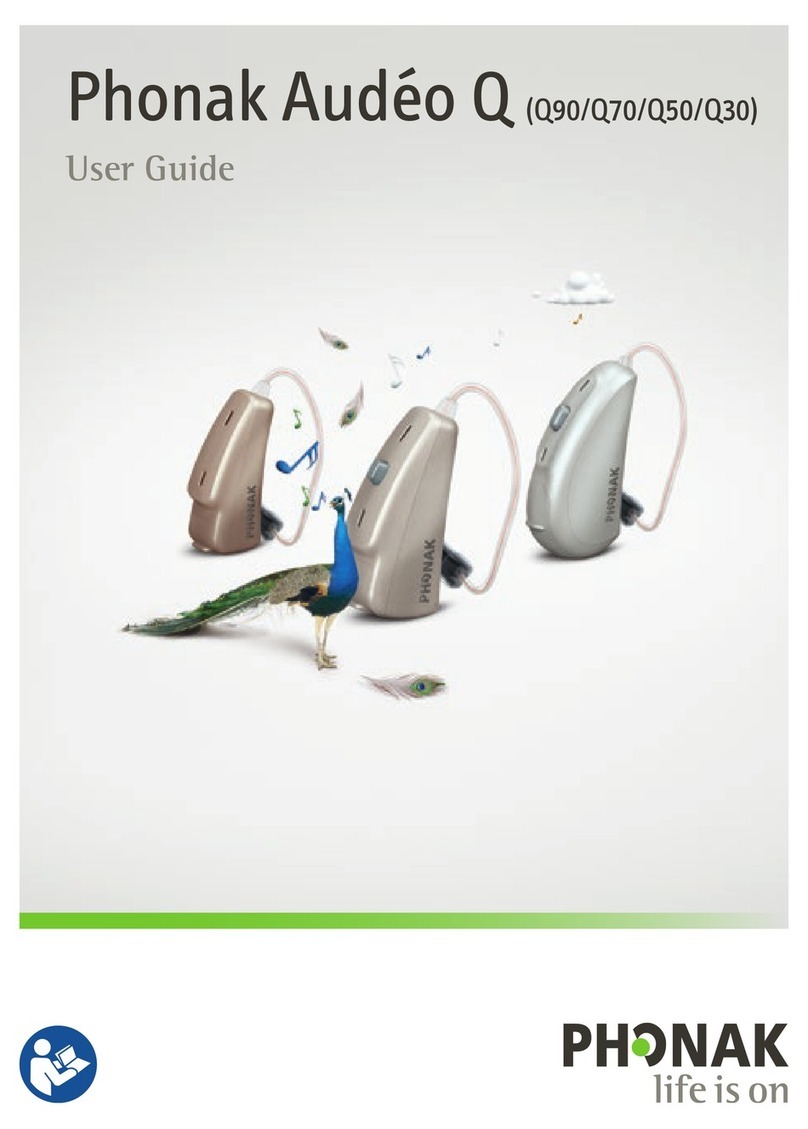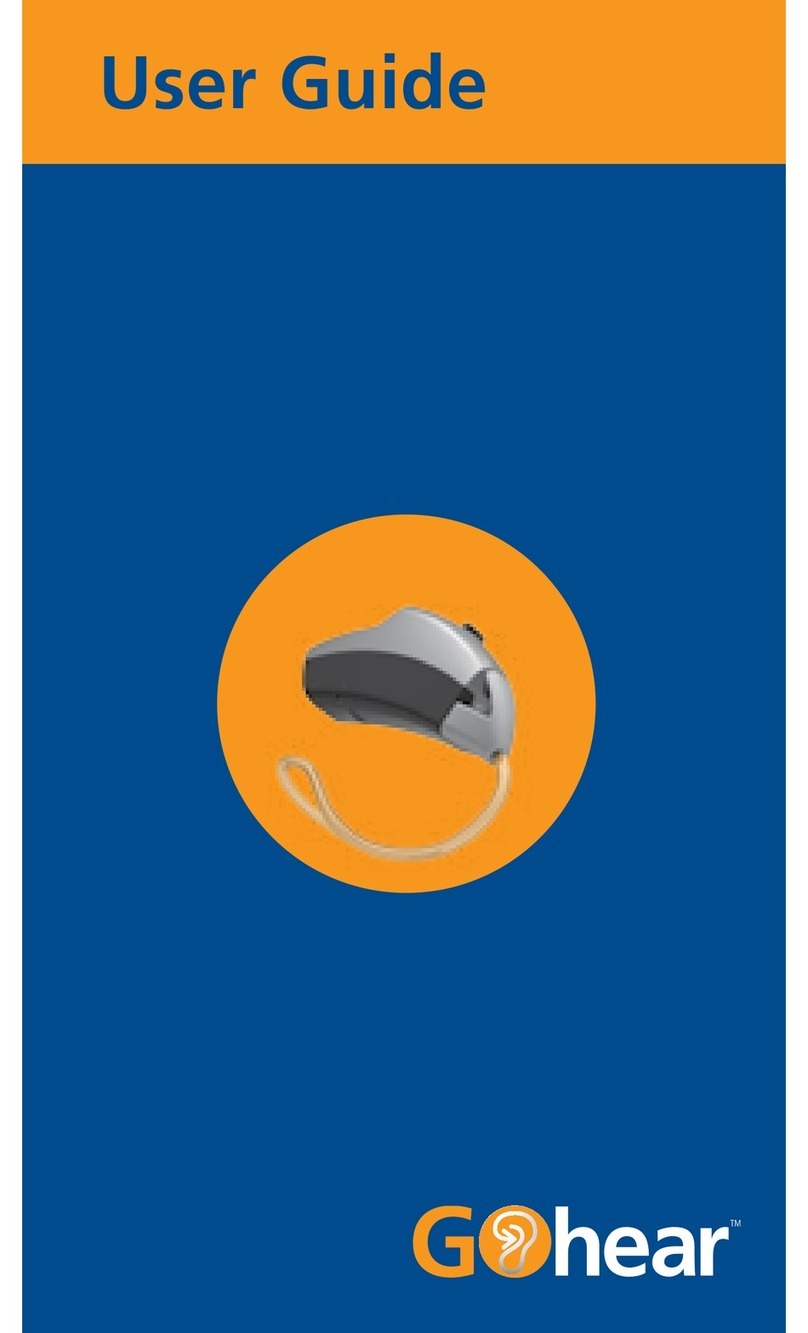
4 |Warnings, Cautions, & Notices
Warnings, Cautions,
& Notices
A person who is younger than 18 years old with hearing loss should
have a medical evaluation by a doctor, preferably an ENT, before
buying a hearing aid. The purpose of a medical evaluation is to identify
and treat medical conditions that may affect hearing but that a hearing
aid won’t treat on its own.
Following the medical evaluation and if appropriate, the doctor will
provide a written statement that the hearing loss has been medically
evaluated and the person is a candidate for a hearing aid. The doctor
may refer the person to an audiologist for a hearing aid evaluation,
which is different from the medical evaluation and is intended to
identify the appropriate hearing aid.
The audiologist will conduct a hearing aid evaluation to assess the
person’s ability to hear with and without a hearing aid. This will enable
the audiologist to select and fit a hearing aid for the person’s individual
needs. An audiologist can also provide evaluation and rehabilitation
since, for people younger than 18, hearing loss may cause problems
in language development and educational and social growth. An
audiologist is qualified by training and experience to asset in the
evaluation and rehabilitation of hearing loss in people younger than 18.
IMPORTANT NOTICE FOR PROSPECTIVE Rx HEARING AID
USERS:
It is good health practice for a person with a hearing loss to have a
medical evaluation by a licensed physician (preferably a physician who
specializes in diseases of the ear) before purchasing a prescription
hearing aid. Licensed physicians who specialize in diseases of
the ear are often referred to as otolaryngologists, otologists or
otorhinolaryngologists. The purpose of the medical evaluation is to
assure that all medically treatable conditions that may affect hearing
are identified and treated before the hearing aid is purchased.
Following the medical evaluation, the physician will give you a written
statement that states that your hearing loss has been medically
evaluated and that you may be considered a candidate for a hearing
aid. The physician will refer you to an audiologist or hearing aid
dispenser, as appropriate, for a hearing aid evaluation.
The audiologist or hearing aid dispenser will conduct a hearing aid
evaluation to assess your ability to hear with and without a hearing aid.
The hearing aid evaluation will enable the audiologist or dispenser to
select and fit a hearing aid to your individual needs.
If you have reservations about your ability to adapt to amplification,
you should inquire about the availability of a trial-rental or purchase
option program. Many hearing aid dispensers now offer programs that
permit you to wear a hearing aid for a period of time for a nominal fee
after which you may decide if you want to purchase the hearing aid.
In some geographies, you must have a medical evaluation before
purchasing a prescription hearing aid. Some States allow an adult to
waive the medical evaluation.

